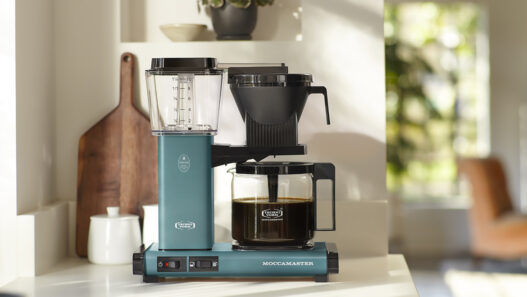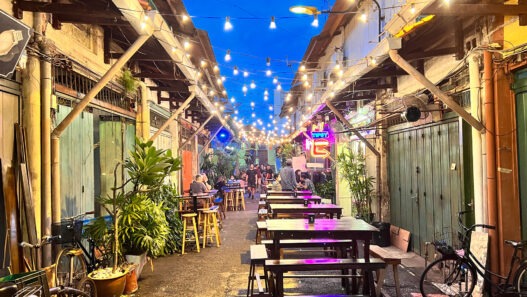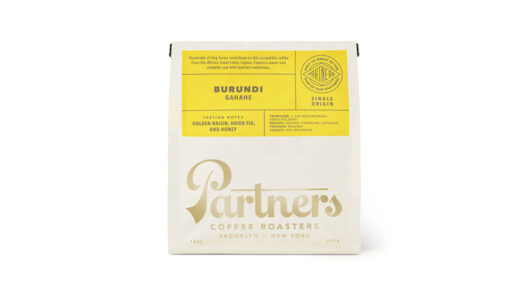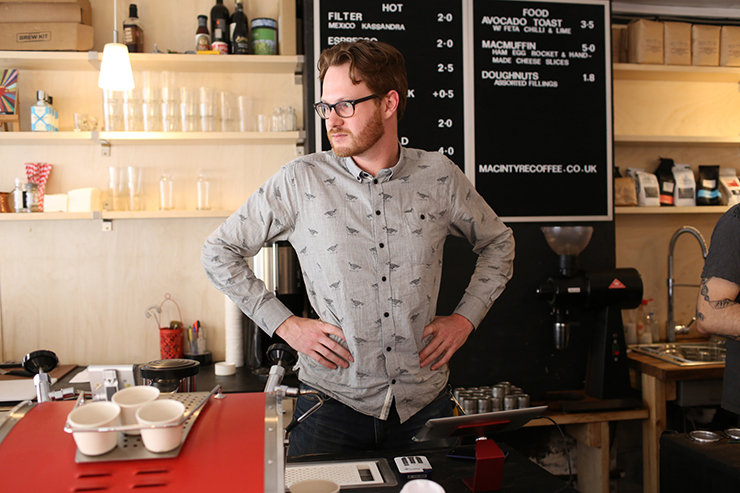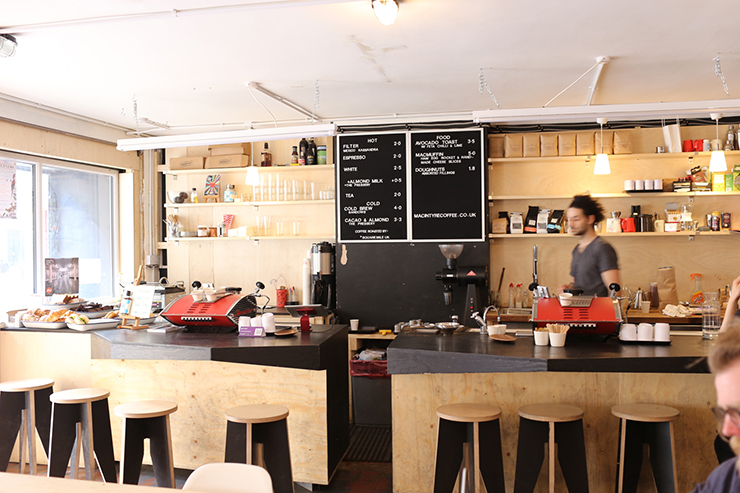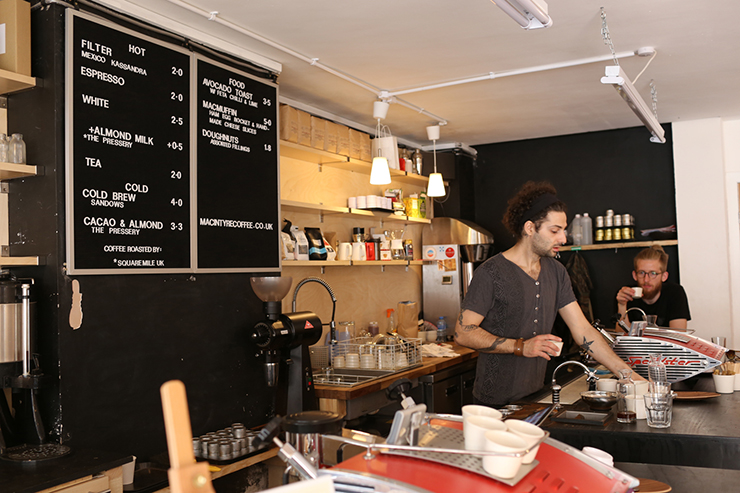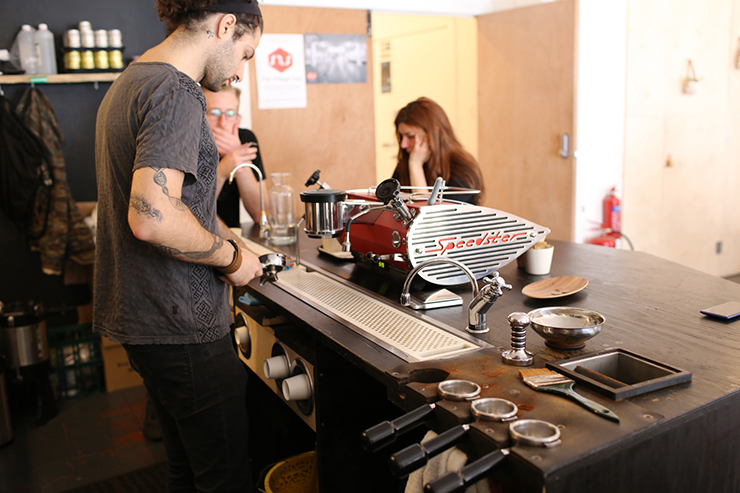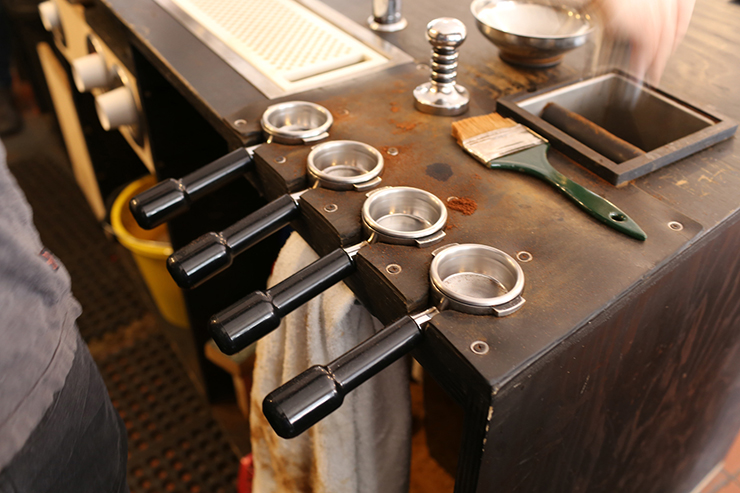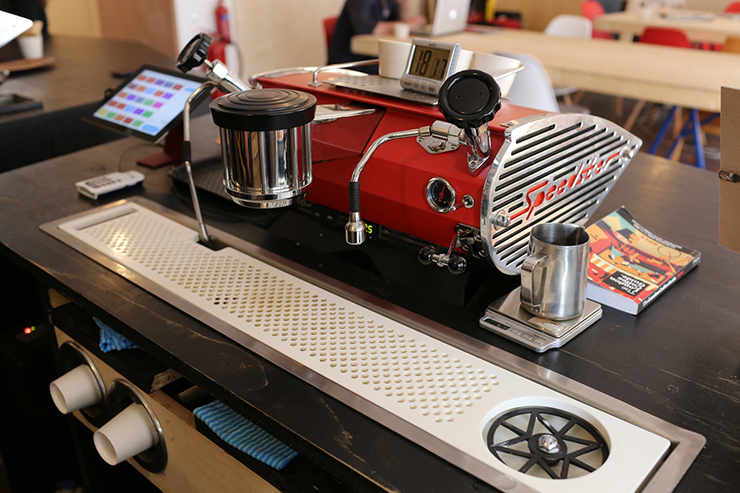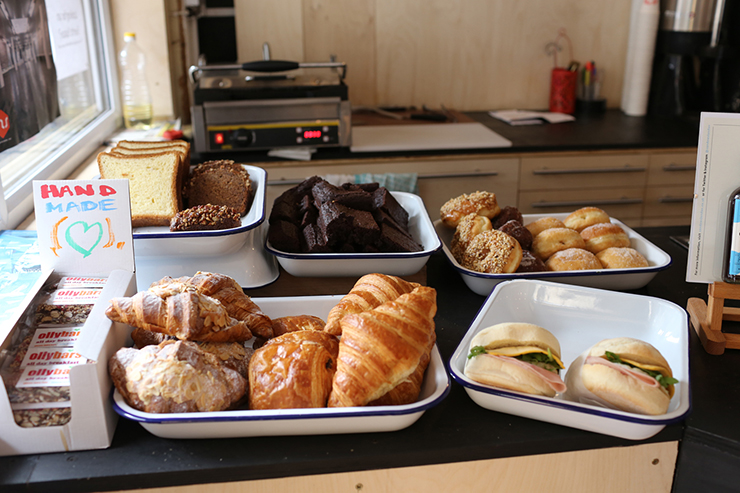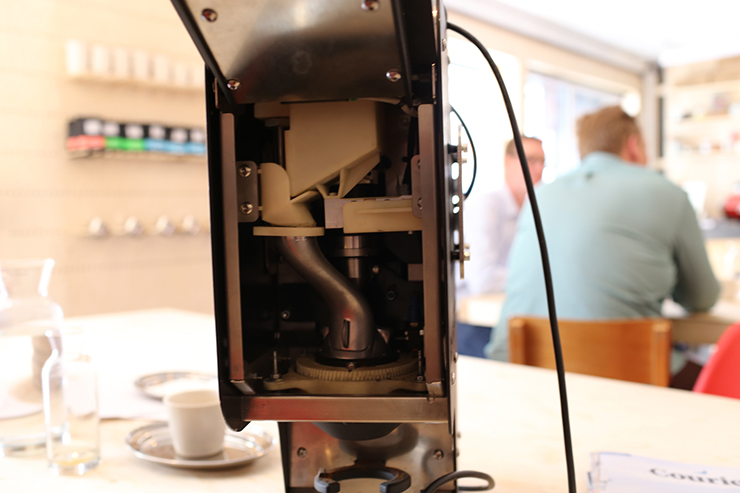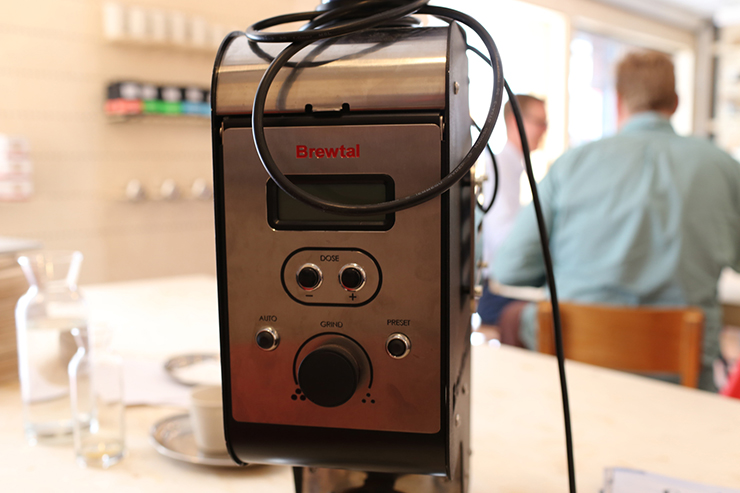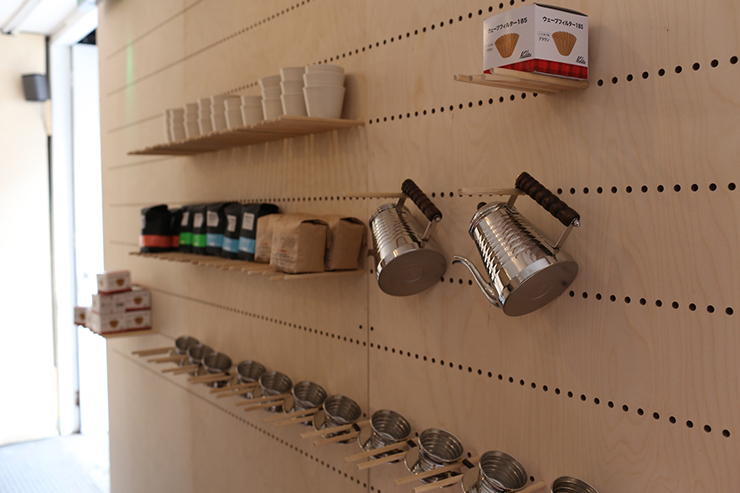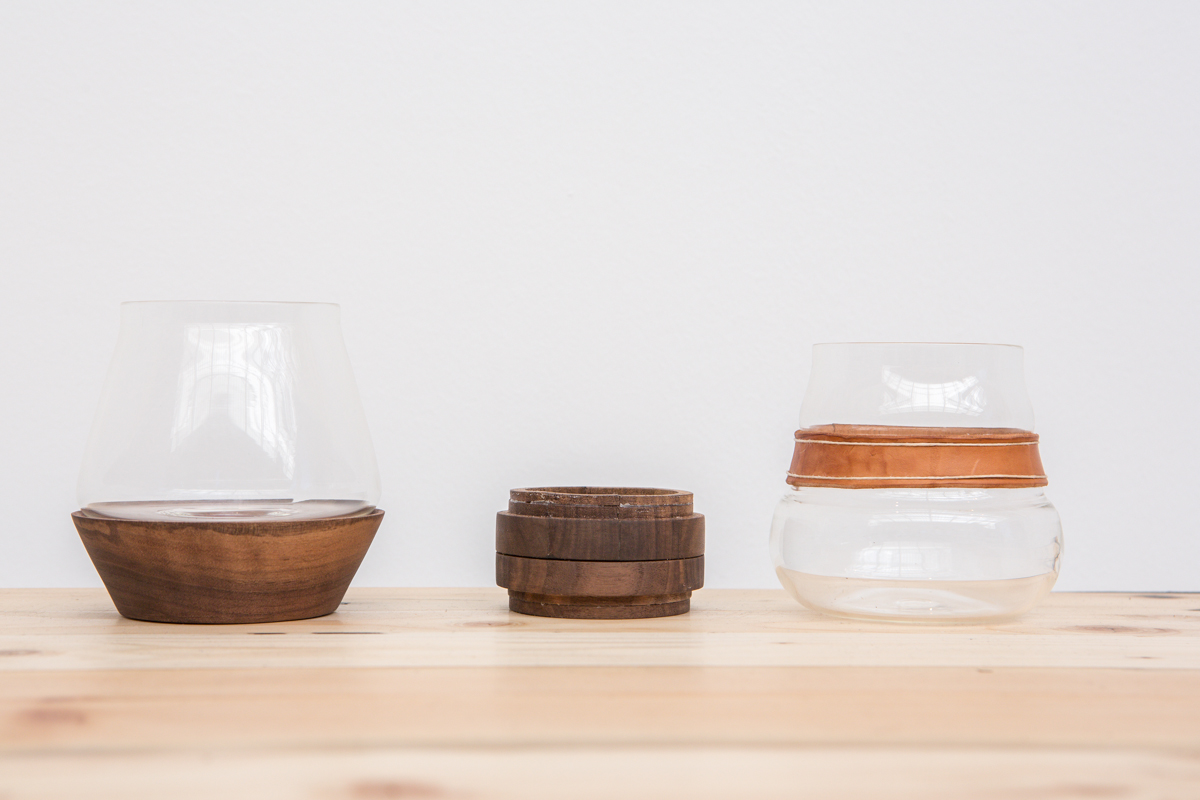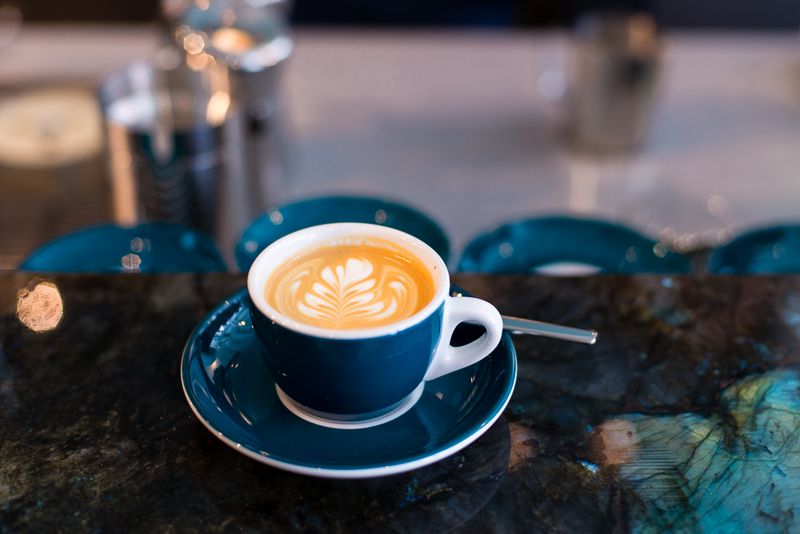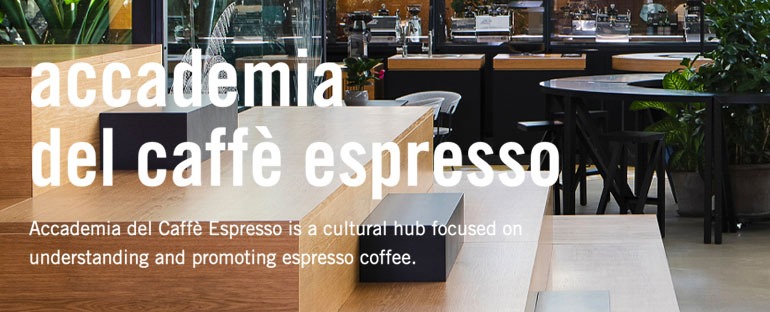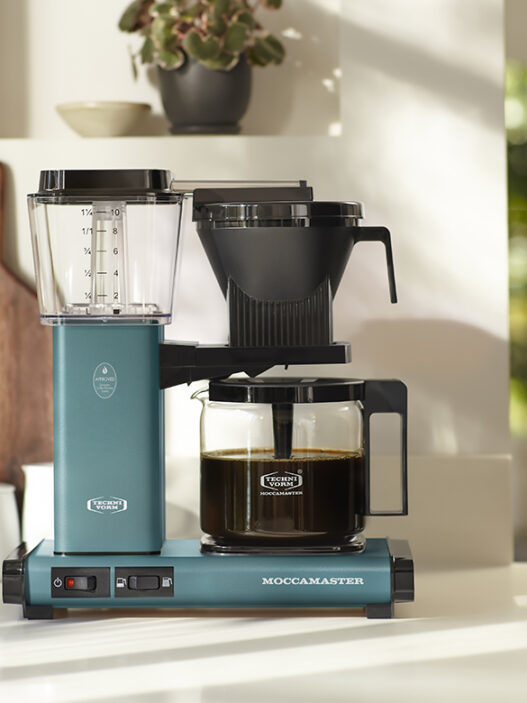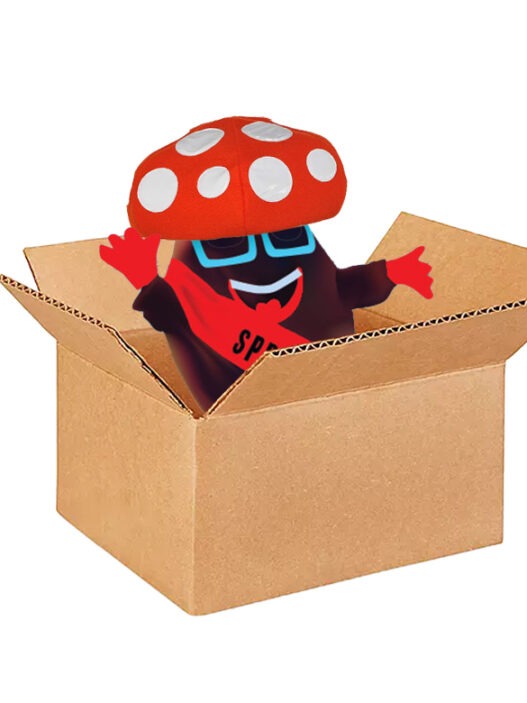From London’s bustling, trendsetting specialty coffee scene comes a unique space in the East End suburb of Hoxton by the name of MacIntyre Coffee. Opened in late 2013, MacIntyre is a café designed with an express purpose of functionality and customer experience, offering a diverse roster of roasters from London and North America and a series of deeply fascinating custom coffee bar modifications. Everything is up for debate at MacIntyre; this is a coffee bar of consideration.
Alex MacIntyre, proprietor of the business, is one of many Australians making a name for themselves in overseas lands. Industrious Australian baristas helped bring specialty coffee to London in the last decade, and in 2014, your barista in Berlin or Paris is just as likely to be from Melbourne or Sydney. London was a logical step for MacIntyre, originally a Sydneysider. “Although there is an incredible and quite mature coffee industry in Australia,” he told me, “I was drawn to London because I felt it could be a bit more creative; the industry is younger, more dynamic, and there are fewer established preconceptions as to how a café should present itself or how coffee should be served.”
The coffee selection at MacIntyre is indeed dynamic, with regular offerings from American roasters like Heart (Portland), Dogwood (Minneapolis), Madcap (Grand Rapids / Washington DC) and Ceremony (Annapolis), in rotation alongside London roasters Workshop and Square Mile. The presence of these roasters from the USA is definitely an anomaly in London, or any coffee bar outside of North America, really. MacIntyre Coffee is a rare new creature in the contemporary coffee scene: The Transatlantic Multi-Roaster.
But let’s look past the roster and dig a bit deeper. The equipment at MacIntyre is what you’d see used in any old cutting edge café these days, with espresso service anchored by two red Kees van der Westen Speedsters. Coffee is ground on the prolific Mahlkönig EK43 grinder, and a Marco Shuttle Brewer alone supplies the cafe’s filter coffee–there are no manual brew methods on offer at MacIntyre. The bar itself is a playground of customisations, the source of a great many cause-and-effect ‘ohhhh’ sounds from patrons and onlookers encountering a set of solutions to age-old cafe problems.
Firstly, the legs of the two Speedsters are placed into cut-outs in the bench and sunk into the bar, so as to lessen the physical barrier between customer and barista (and, in turn, the social awkwardness that can come from peering at people through towers of espresso cups). Inspiration for this design element comes from the open and interactive nature of many cocktail bars. Next, the drip-trays are custom jobs running the length of the bar, incorporating pitcher rinsers which streamlines the bar cleaning process. All coffee is ground using the EK43 and as such, beans are pre-weighed and often pre-dosed into the four group handles that all have their own cut-out space set into the bench next to the machine. This baristas can tamp using only one hand, allowing an appropriate body position conducive to even and consistent tamping.
Alex outlined his thought process behind the custom set-up, in a quote from our interview worth sharing in its entirety.
There is a feel of wild and genuine experimentation to Mr. MacIntyre’s bar flow approach. “I wanted to ask questions and try and consider issues that usually tend to be overlooked,” he explained. “My bar is far from perfect but it’s fun messing about.”
As well as innovating in the front of house, Alex MacIntyre has been working on a new grinder prototype. Still in its formative stages, it shows a lot of promise by approaching the analog problems of grinder technology with a digital set of solutions. “My aim was to create a grinder that can give a barista more precise control over dose using an integrated weight sensor,” he told me, going on to outline his plan to use “integrated sensors to supply more hard data” about the coffee grinding process.
This is all high geekery, of course, but the ultimate goal is to create a coffee grinder with digital controls and web-connectivity. According to MacIntyre, “the ultimate aim is to not only create a grinder that gives quality focused baristas more control and feedback, but also to allow larger companies a higher level of consistent quality than they might otherwise have had in the past.”
With this web-connected interface, there’s theoretically huge potential for the better sharing of grinder data between coffee professionals around the world. Rather than variables like grind size changing due to an arbitrary turn of a dial, Mr. MacIntyre’s vision imagines a network of digital grinders, each capable of dialing in automatically based on a simple number value. Such a machine could potentially have many advantages; for example, the grinder could tell the barista when they need to change a burr set before their coffee quality ever starts to dip. This project is still in prototype land (pictured above), but a grinder that takes into account so many issues that are prevalent in most commercial models has a lot of possibilities.
I’m typically a hard sell when it comes to geeking out over machinery or shop fit-outs, but MacIntyre Coffee is a coffee bar I cannot help but be excited about. London is one of specialty coffee’s most competitive, exciting markets, and for a cafe that already stands out, one can’t help but feeling that Alex MacIntyre is just getting started.
Eileen P. Kenny is a Sprudge.com staff writer based in Melbourne. Read more Eileen P. Kenny on Sprudge.






